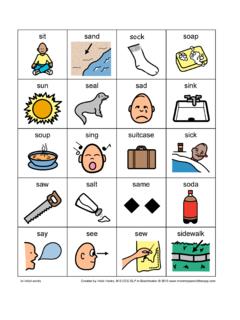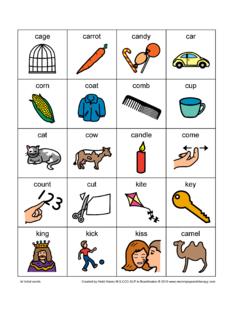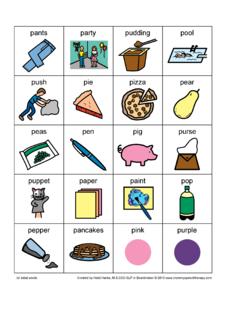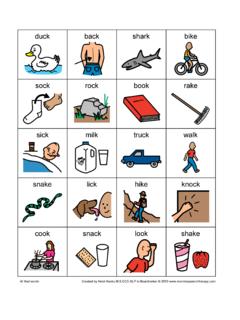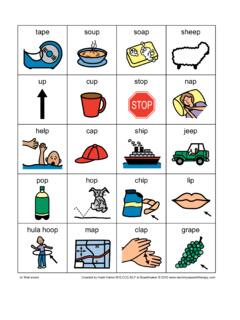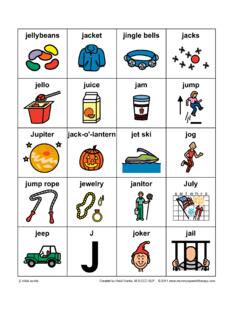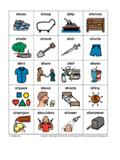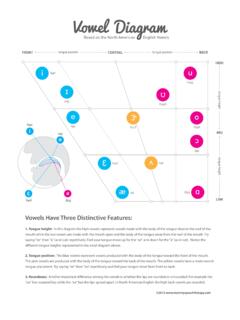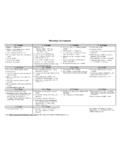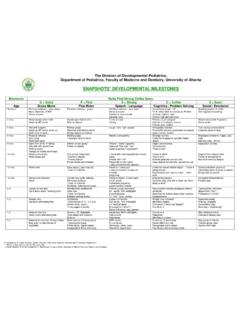Transcription of Phonological Processes - Mommy Speech Therapy
1 Final Consonant DeletionPhonological ProcessesBleile, Ken M. (1995). Manual of Articulation and Phonological Disorders. San Diego, CA: Singular Publishing Group, Inc. Bowen, Caroline, (2011). Elimination of Phonological Processes in Typical , (2008). Phonological Pattern Suppression by Age. , (2001). Pocket Guide to Assessment in Speech -Language Pathology (2nd Edition). San Diego, CA: Pena-Brooks, Adriana, & Hedge, (2007). Assessment and treatment of articulation and Phonological disorders in children (2nd Edition). Austin, TX: alvoelar sounds, like /t/ and /d/, are substituted with velar sounds like /k/ and /g/When the /l/ or er sounds are replaced with a vowelBackingVowelizationSubStitution gog for dog Usually seen in more severephonological delays.
2 When velar or palatal sounds, like /k/, /g/, and sh, are substituted with alveolar sounds like /t/, /d/, and /s/When a nonaffricate is replaced with an affricate (ch or j)FrontingAffrication tootie for cookie joor for door /r/ becomes a /w/, and /l/ becomes a /w/ or y soundWhen an affricate, like ch or j ,is replaced with a fricative or stop like sh or /d/When a fricative (like /f/ or /s/) or affricate (ch,j) is substituted with a stop consonant like /p/ or /d/When a nonalveolar sound is substituted with an alveolar soundGlidingDeaffricationStoppingAlveola rization wabbit for rabbit or yeyo for yello appo for apple or papuh for paper ships for chips pan for fan or dump for jump tu for shoe 6 , /s/ by 3; /v/, /z/ by 3 1/2; sh, ch, j by 4 1/2.
3 Th gone by 5 When a palatal sound is substituted with a nonpalatal soundWhen a nonlabial sound is replaced with a labial soundDepalatalizationLabialization fit for fish pie for tie When a consonant sound starts to sound like another sound in the wordWhen two phonemes are substituted with a different phoneme that still has similar featuresAssimilationCoalescenceASSimilAt ion bub for bus foon for spoon When a nasal consonant like /m/ or /n/ changes to a nonnasal consonant like /b/ or /d/Denasalization doze for nose When a voiced consonant at the end of a word like /b/ or /d/ is substituted with a voiceless consonant like /p/ or /t/When a voiceless consonant in the beginning of a word like /k/ or /f/ is substituted with a voiced consonant like /g/ or /v/Final Consonant DevoicingPrevocalic Voicing pick for pig gomb for comb When a consonant cluster is reduced to a single consonantWhen a sound is added between two consonants, typically the uh soundCluster ReductionEpenthesisSyllAble Structure pane for plane bu-lue for blue Gone by 4 yrs.
4 Without /s/,gone by 5 yrs. with /sWhen the final consonant in a word is left offWhen a complete or incomplete syllable is repeatedReduplication toe for toad baba for bottle When the initial consonant in a word is left offWhen the weak syllable in a word is deleted unny for bunny nana for banana Usually seen in more severephonological yrs. Initial Consonant DeletionWeak Syllable DeletionApprox. ageof eliminationExampleDefinitionApprox. ageof eliminationExampleDefinitionPhonological Processes are patterns of sound errors that typically developing children use to simplify Speech as they are learning to talk. a Phonological disorder occurs when Phonological Processes persist beyond the age when most typically developing children have stopped using them or when the Processes used are much different than what would be ageof eliminationExampl
